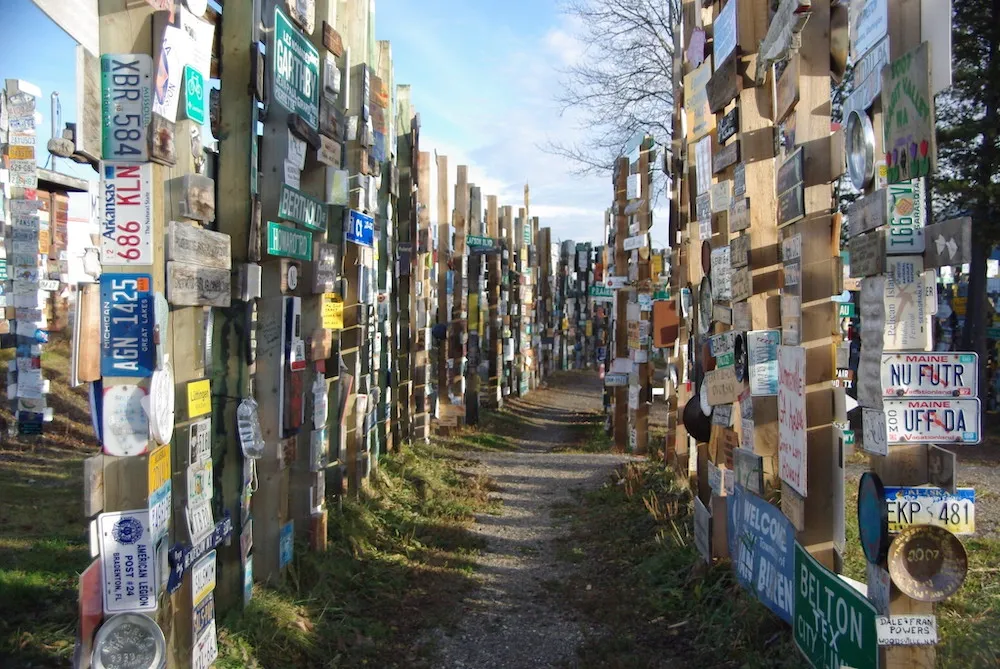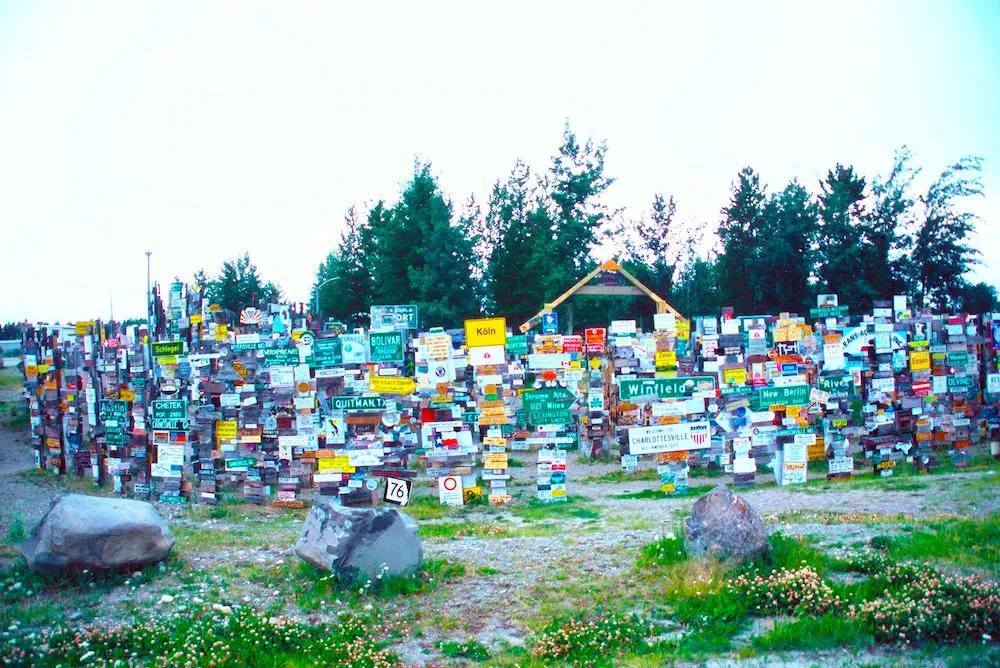There’s a Forest Made Out of Signs in Canada
Since 1942, people have planted 91,000 signs from around the world
/https://tf-cmsv2-smithsonianmag-media.s3.amazonaws.com/filer/af/dc/afdcf211-77a3-432e-8dcd-d8a66e7490fe/signpost_forest.jpg)
Located deep within the Yukon, one of the most densely wooded areas of Canada, sits a patch of land that’s unlike any other forest on the planet. Instead of a canopy of treetops cutting across the horizon, tens of thousands of signposts perch haphazardly one on top of the other from locales near and far. They’re all part of the Signpost Forest, the largest collection of signs from places around the world.
At last count, the Signpost Forest in Watson Lake, located about 10 miles north of the U.S.-Canadian border, contains 91,000 signs from spots near and far, including Berlin, Moscow, Dublin and Hawaii. While many of the locations are easily recognizable, there are others that are lesser known, such as Uettligen, Switzerland; Guemes Island, Washington; and Cool, California. So how did all these signs get there in the first place?
According to the Watson Lake Visitors Center, which helps maintain the collection, a U.S. soldier by the name of Carl K. Lindley was the first person to place a sign there in 1942 while he was helping to construct the Alaska Highway, a strategic roadway project undertaken by the U.S. government during World War II. Built of planks that he nailed together and painted red and white, the handmade sign proudly proclaimed “Danville, Illinois, 2,835 miles,” denoting the distance that the homesick soldier was from his hometown. (The original sign has since been lost to time, however, 50 years later, in 1992, Lindley and his wife Elinor made the pilgrimage back to Watson Lake to place a replica sign, which is still there.) Little did Lindley know that years later travelers from near and far would follow in his footsteps and place signposts from their own hometowns.
“It’s one of those things that really took off,” says Lelah Bruce, supervisor of the Watson Lake Visitors Center. “There are signs from everyone. It’s the idea of leaving something in passing and a way for people to say, ‘Hey, I was here.'”

Bruce says that it’s not uncommon for people to travel out of their way to post a sign, and many travelers build their itineraries to have time to wander around the roughly two-acre site, which has pathways meandering throughout the property and is open 24 hours a day, 7 days a week and 365 days a year.
“A lot of these are personal signs that people make to literally say that they’re here,” she says. “We also have a lot of familial signs where, say, a grandpa will put up a sign and then years later family will come back and try to find it.”

To help accommodate anyone interested in creating a sign, the visitor center, which is located on the Signpost Forest property, has wood and paints on hand for decorating. However, many people opt to bring their own signs, albeit illegally, by snatching a metal sign from their hometown and nailing it to one of the wood posts.
“It is the largest collection of stolen property never prosecuted,” Bruce says. “But of course we don’t encourage it.”
The forest has grown so vast that the visitors center doesn’t keep any sort of inventory of which signs make up the collection, although Bruce does recall some that stand out from the rest.
“People have used anything to make a sign, including hard hats, toilet seats and license plates from when their grandfathers were helping build the [Alaska Highway],” she says. “There was a woman who put up a really large bra from her trailer. I also posted a license plate from the premier of Prince Edward Island upon his request.”
But one question still remains: How exactly did travelers fit some of the larger highway signs into their carry-on bags?